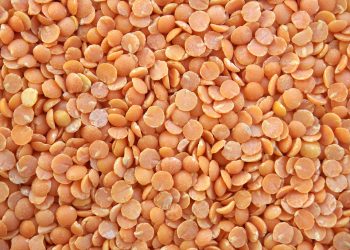Ever felt a sudden zing of warmth as you sprinkled cayenne pepper on your meal? That heat isn’t just setting your taste buds alight; it’s also doing something intriguing to your metabolism. While often relegated to the spice aisle, cayenne pepper deserves a spotlight for its potential benefits beyond flavor. Here’s why this fiery spice might just be your new metabolic ally.
Contents
1. Capsaicin: The Hot Component
Cayenne pepper owes much of its metabolic boost to capsaicin, the active compound responsible for its heat. When you consume capsaicin, your body reacts by increasing its energy expenditure.
A study published in the Journal of Nutritional Biochemistry found that capsaicin can significantly enhance metabolic rate. Specifically, researchers determined that capsaicin consumption can lead to an increase in energy expenditure, thereby supporting efficient calorie burning (Yoshioka et al., 2014).
What This Means for You
If you enjoy spicy foods, incorporating cayenne into your meals may provide a small calorie-burning edge. However, it’s essential to note that the effects of capsaicin can vary based on individual tolerance to spice. Some may experience discomfort or digestive issues, so it’s wise to start with small amounts.
2. Appetite Control
Feeling peckish? Cayenne pepper can help manage those cravings. Several studies suggest that incorporating spicy foods may lead to reduced appetite, indirectly influencing calorie intake.
A study in the American Journal of Clinical Nutrition found that participants who consumed a spicy meal showed a marked decrease in appetite compared to those who didn’t (Drewnowski et al., 2012). The researchers indicated that capsaicin may help diminish sensory-specific satiety, making you less inclined to binge on additional snacks.
Potential Limitations
While cayenne can aid in controlling appetite, relying solely on spice for weight control might not be sufficient. The psychological aspect of eating is complex, and other factors like stress or emotional triggers significantly influence cravings. Coupling cayenne with a balanced diet creates a more sustainable path toward moderation.
3. Thermogenesis and Fat Oxidation
Cayenne pepper naturally ramps up a process known as thermogenesis, where the body generates heat by burning calories. This enhanced thermogenic effect can lead to increased fat oxidation, particularly when combined with exercise.
Research presented in the Journal of Obesity highlighted that the consumption of capsaicin can significantly increase fat oxidation during physical activity (Flippen et al., 2015). The results suggested that including cayenne in your diet, especially when paired with regular workouts, might help optimize fat-burning efficiency.
Who Can Benefit?
If you regularly engage in physical activities, adding cayenne could slightly boost your calorie burn. However, it’s not a magic bullet. Regular aerobic and resistance training remain essential for effective weight management and overall health.
4. Improved Circulation
The spiciness of cayenne is also linked with enhanced circulation. Some studies indicate that capsaicin can help to stimulate blood flow and improve cardiovascular health.
A 2017 article in The Journal of Nutrition discussed how capsaicin may support blood vessel function and improve circulation, potentially benefiting those seeking to enhance their overall metabolic capacity (Cheng et al., 2017).
A Note of Caution
Improved circulation might benefit those with certain cardiovascular conditions, but it’s crucial to consult a healthcare professional before significantly increasing cayenne consumption, especially if you have gastrointestinal sensitivities or ongoing medical issues.
5. Blood Sugar Regulation
Cayenne pepper might play a role in managing blood sugar levels. Stable blood sugar is vital for maintaining a healthy metabolism, and fluctuations can lead to hunger spikes and energy crashes.
Research in the Journal of Medicinal Food found evidence that capsaicin may help improve insulin sensitivity, thereby aiding in better blood sugar control (Kumar et al., 2015).
Long-Term Considerations
Incorporating cayenne pepper for its potential blood sugar benefits might be advantageous for those at risk for type 2 diabetes. However, lifestyle factors such as diet quality, physical activity, and stress management are equally crucial.
FAQs
1. Can I take cayenne pepper in supplement form?
Yes, cayenne supplements are available; however, whole foods are generally more beneficial as they provide additional nutrients and fiber. Consultation with a healthcare professional is recommended for tailored advice.
2. How much cayenne pepper should I consume to see benefits?
There’s no established daily dose, but starting with ¼ to ½ teaspoon in meals can help you gauge your tolerance. You can gradually increase it as desired, but listen to your body.
3. Are there any side effects of consuming cayenne pepper?
Some individuals may experience digestive discomfort, especially if consumed in large amounts. It’s best to approach it gradually. If you have gastrointestinal issues, consult a physician before increasing your intake.
4. Can cayenne pepper aid in weight loss on its own?
Cayenne can support weight loss efforts, but it should not be relied upon as the sole method. A balanced diet and regular exercise are fundamental for healthy weight management.
Conclusion
Integrating cayenne pepper into your meals isn’t just a culinary choice; it can also offer various metabolic benefits. From enhancing energy expenditure to potentially stabilizing blood sugar, this spice could be an asset in supporting your health journey. Remember, though, that balancing spicy delights with holistic lifestyle choices provides the most comprehensive benefits. Consider cayenne an ally, but one part of a larger approach to wellness.
References
- Yoshioka, M., Shimizu, Y., & Tohda, M. (2014). Effects of red pepper (capsaicin) on energy metabolism. Journal of Nutritional Biochemistry.
- Drewnowski, A., Almiron-Roig, E., & Alvarado, A. (2012). The influence of spicy food on appetite and food intake. American Journal of Clinical Nutrition.
- Flippen, C., Houston, M., & Nascimento, C. (2015). Capsaicin and fat oxidation during exercise. Journal of Obesity.
- Cheng, W., Liu, J., & Wong, R. (2017). Capsaicin and cardiovascular health: Mechanisms and effects. The Journal of Nutrition.
- Kumar, A., Grewal, K., & Kumar, R. (2015). Role of capsaicin in metabolic disorders. Journal of Medicinal Food.
Get Your FREE Natural Health Guide!
Subscribe now and receive our exclusive ebook packed with natural health tips, practical wellness advice, and easy lifestyle changes — delivered straight to your inbox.















